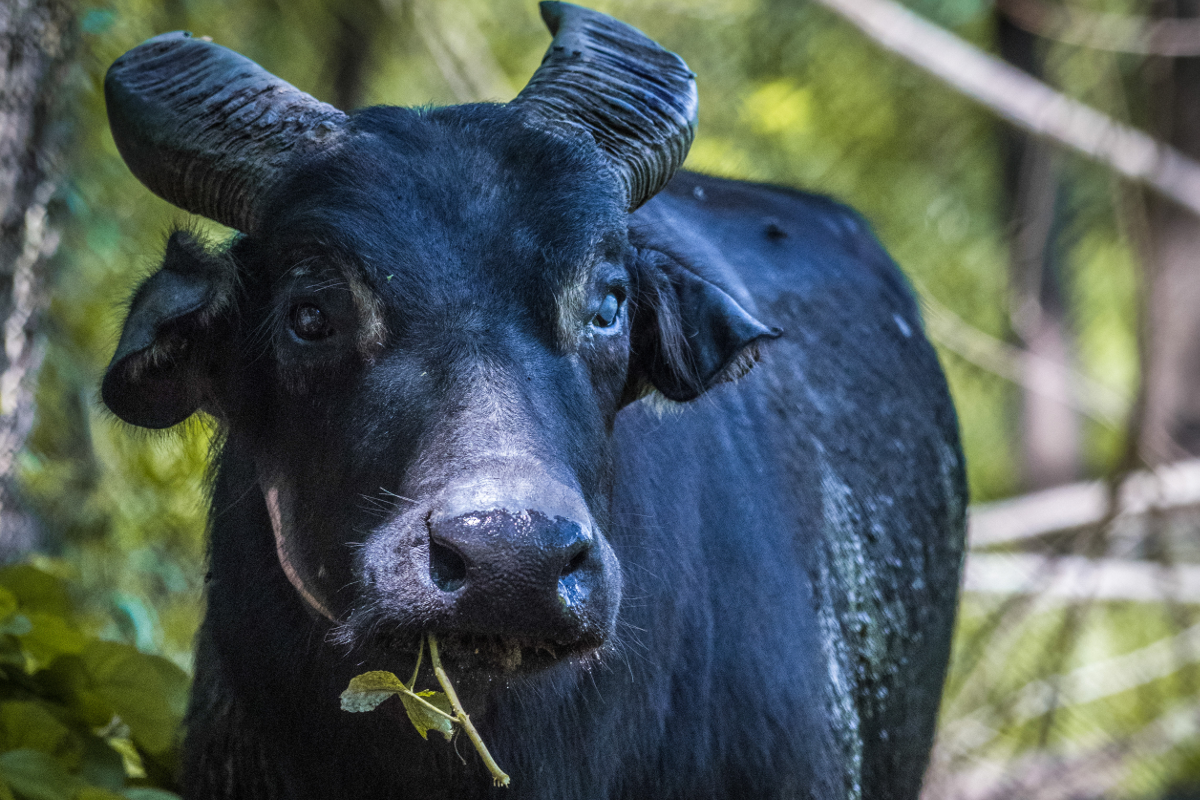Islands are "laboratories of evolution" and home to animal species with many unique features, including dwarfs that evolved to very small sizes compared to their mainland relatives, and giants that evolved to large sizes. A team of researchers from the German Centre of Integrative Biodiversity Research (iDiv) and Martin Luther University Halle-Wittenberg (MLU) has now found that species that evolved to more extreme body sizes compared to their mainland relatives have a higher risk of extinction than those that evolved to less extreme sizes. Their study, which was published in Science, also shows that extinction rates of mammals on islands worldwide increased significantly after the arrival of modern humans.
Islands are hotspots for biodiversity – they cover less than 7% of the Earth’s land area, but account for up to 20% of all terrestrial species on the planet. However, islands are also hotspots for species extinction as 50% of today’s IUCN threatened species are native to islands.
In response to the unique characteristics of island environments, many organisms undergo remarkable evolutionary changes, among the most notable of which include extreme modifications of body size. This phenomenon is known as gigantism or dwarfism – in general, relatives of large continental species tend to become smaller on islands and small species tend to become larger. Some of these are already extinct evolutionary marvels such as dwarf mammoths and hippos that shrunk to less than one-tenth the size of their mainland ancestors, and rodents and gymnures of unusual size that increased by over 100-fold. These also include dwarf and giant species currently threatened with extinction, such as the tamaraw of Mindoro (Bubalus mindorensis), a dwarf buffalo with a shoulder height of approximately 100 cm, and the giant Jamaican hutia (Geocapromys brownii), a rat-like mammal about the size of a rabbit.
A team of researchers led by iDiv and MLU now confirmed that evolution towards these features frequently goes hand in hand with increased susceptibility to extinctions. "On the one hand, phyletic giants might provide bigger reward for hunting", explains Dr Roberto Rozzi, former postdoctoral researcher at iDiv’s synthesis centre sDiv and researcher at the Museum für Naturkunde Berlin (now Curator of Palaeontology at Zentralmagazin Naturwissenschaftlicher Sammlungen of Uni Halle). "On the other hand, dwarfed species seem to have less deterrence power, facilitating hunting or predation by introduced predators."
Higher extinction risk of extreme dwarfs and giants
To quantify how evolution towards dwarfism and gigantism may have affected the risk and rate of extinction (before and after human arrival), the researchers used data on fossil and living island mammals including over 1,200 extant and 350 extinct species of insular mammals on 182 islands and paleo-islands (formerly isolated landmasses that are now part of the mainland areas) worldwide.
Their findings indicate a previously unknown result that those species that underwent more extreme body size shifts, either larger or smaller, were more likely to be endangered or to go extinct on islands. Comparison between the two directions of body size change showed that insular giant species have a slightly higher extinction risk than insular dwarfs. However, this difference was only significant [KK1] when extinct species were included. Since the European expansion around the globe, extinctions have similarly affected dwarfed and giant insular mammals. "This likely reflects the impact of more intense and multifaceted human pressures, such as overexploitation and accelerated habitat loss, but also introductions of novel diseases and invasive predators", says Dr Roberto Rozzi.
Overlap of human colonization and increased extinction rates of insular mammals
The researchers also analyzed the global fossil record of mammals on islands over the last 23 million years (late Cenozoic) and found a clear correlation between island extinctions at a global level and the arrival of modern humans. "We recorded an abrupt shift in the extinction regime from pre-sapiens to sapiens-dominated island ecosystems. Time overlap of insular mammals with H. sapiens [KK2] increased their extinction rates more than 10-fold. However, our results at the global level do not rule out the concomitant contribution of environmental drivers such as climate change on local extinctions of island mammals", says senior author Prof Jonathan Chase from iDiv and MLU. "While it is important to acquire more paleontological field data to further refine extinction chronologies, conservation agendas should, at the same time, give special priority to protecting the most extreme insular giants and dwarfs, many of which are already threatened with extinction."
This research was financed inter alia by the Deutsche Forschungsgemeinschaft (DFG; FZT-118).
Original publication: Roberto Rozzi, Mark V. Lomolino, Alexandra A. E. van der Geer, Daniele Silvestro, S. Kathleen Lyons, Pere Bover, Josep A. Alcover, Ana Benítez-López, Cheng-Hsiu Tsai, Masaki Fujita, Mugino O. Kubo, Janine Ochoa, Matthew E. Scarborough, Samuel T. Turvey, Alexander Zizka, Jonathan M. Chase (2023). Dwarfism and gigantism drive human-mediated extinctions on islands. Science. Doi: 10.1126/science.add8606
Image: Kalibasib, the world’s last captive tamaraw, died in 2020. Credit: Gab Mejia
